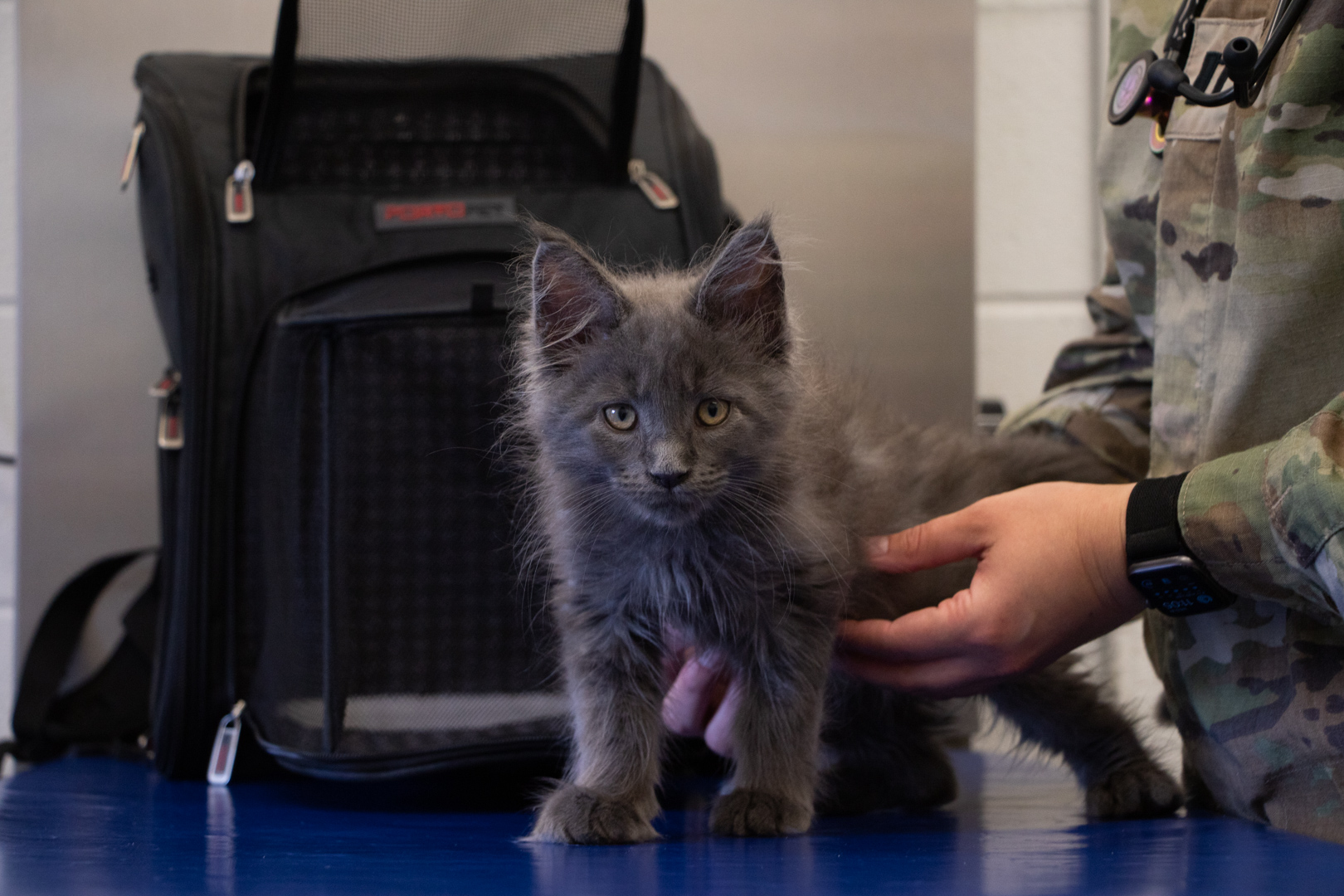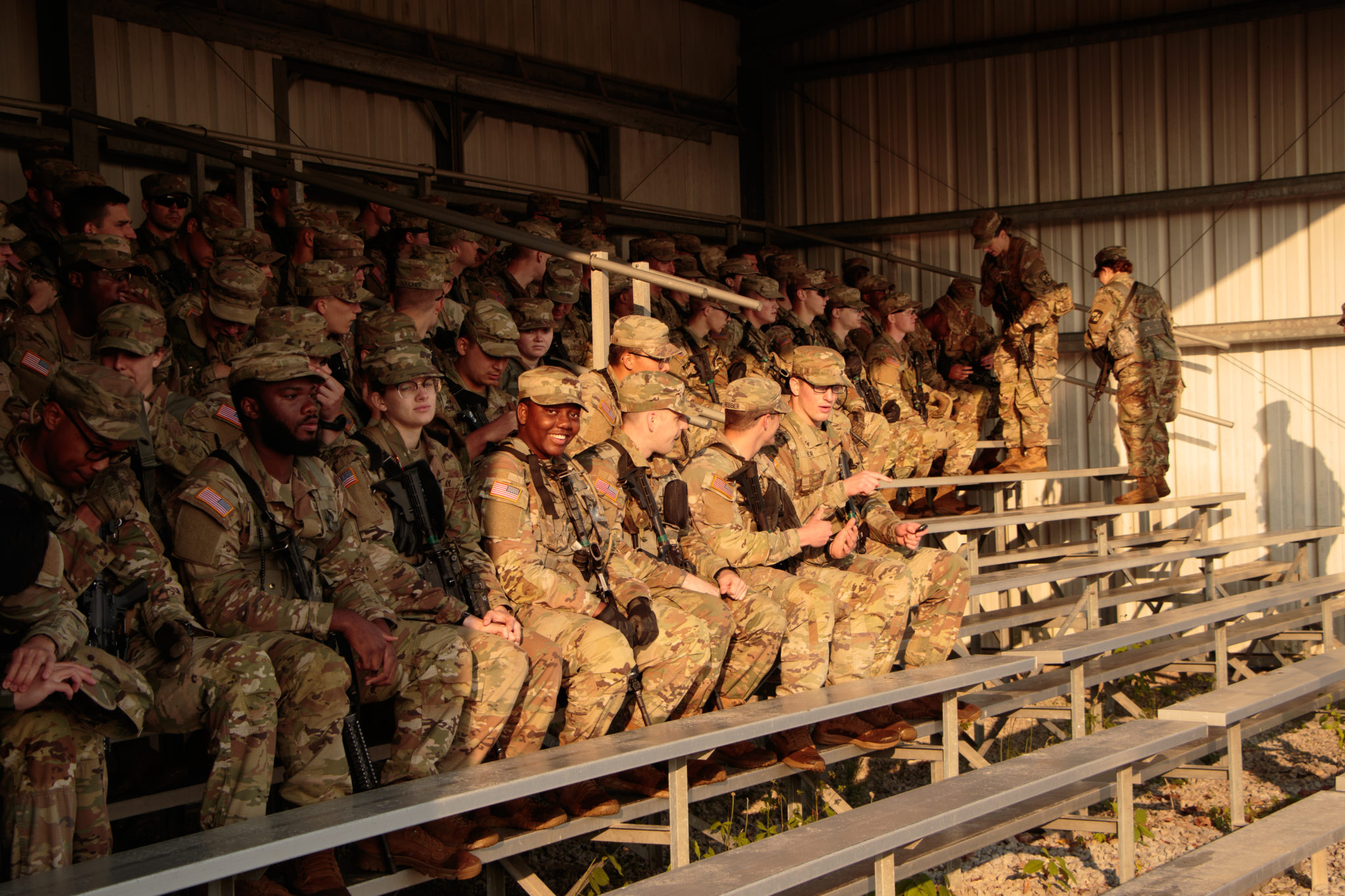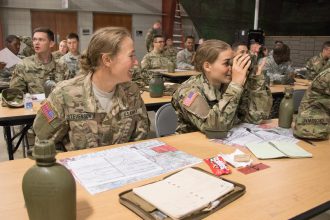
Cadets Meg Stevenson, Appalachian State University, and Alexandra Crosswait, Dartmouth College, work on practical exercises at Fort Knox, Ky., on July 25, 2018. (Photo by Emilia Kuentz)
FORT KNOX, Ky. – Maps, protractors, and binoculars covered the fold-out tables set out before Cadets from 9th Regiment, Advanced Camp for a Call for Fire Trainer on July 25.
Following 45 minutes of instruction, they had two hours to practice their skills in preparation for a must-pass 20-minute test. Additional time was set aside for retraining and retesting.
Sgt. 1st Class Matthew Kruse explained that the purpose of today’s training is to teach Cadets how to call for, and more specifically adjust, indirect fire.
Direct fire is used when the target is within the sight range of a Soldier’s weapon on the ground. Indirect fire is used when the target is not within that sight.
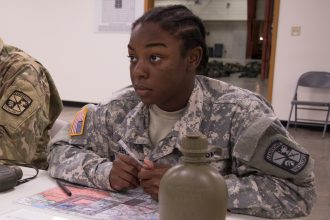
Cadets from 9th Regiment, Advanced Camp learned how to call for fire at Fort Knox, Ky., on July 25, 2018. (Photo by Emilia Kuentz)
Lt. Col. Eric Durrant, Professor of Military Science at Campbell University, noted that indirect fire from an M119 Howitzer cannon can reach anywhere from 800 meters to 24 miles.
When the target is too far away for direct fire, indirect fire must be called in to the Fire Direction Center (FDC).
“Anytime somebody goes outside the wire while deployed,” described Kruse, could turn into a situation that necessitates a call for fire.
The Cadets focused on the first four of the six elements of a call for fire: observer identification, warning order, target location, and target description.

Lt. Ryan Gutshall, graduate of DeSale University, teaches Cadets how to call for fire at Fort Knox, Ky., on July 25, 2018. (Photo by Emilia Kuentz)
Posing as forward observers on the ground, the Cadets practiced calling for fire by identifying themselves and issuing a warning order to adjust fire.
Following receipt of the order by the FDC, the Cadets provided the target’s eight-digit grid location and a description of the enemy.
Identifying a target’s location calls upon a Soldier’s knowledge of land navigation and map reading, emphasized Kruse, as well as of terrain association, the method of finding a location or point on a map based on the surrounding terrain, with an added emphasis on precision.
Cadet Alexandra Goldhorn, a student at the Citadel, stated calling for fire is all about being exact and precise.
“You have to be precise in your measurement from you to your target,” in order to get an accurate Observer-Target factor, asserted Goldhorn.
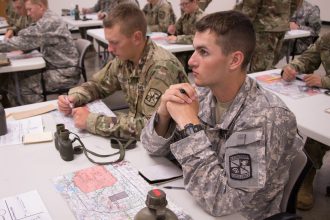
Cadets from 9th Regiment, Advanced Camp learned how to call for fire at Fort Knox, Ky., on July 25, 2018. (Photo by Emilia Kuentz)
She and the other Cadets also learned about successive bracketing, a method for adjusting fire when the previous round doesn’t hit the target head on.
Goldhorn mentioned that in the call for fire exercises Cadre are looking for focus and attention to detail. They’re checking to see if Cadets are picking up on all the small things necessary for a call for fire, elaborated Goldhorn.
“As future Army Officers we need to be able to do that ourselves,” said Goldhorn, calling the ability to call for fire a basic Soldier skill that every Army Officer should know.
END OF MISSION, TARGET ARTICLE #17 COMPLETED, OVER.

